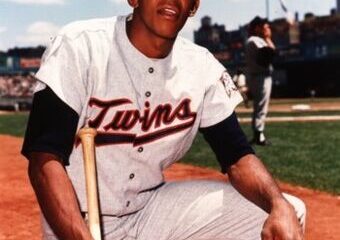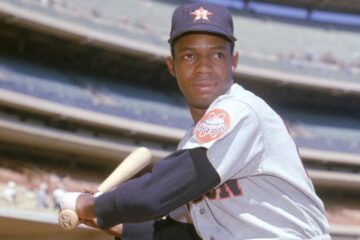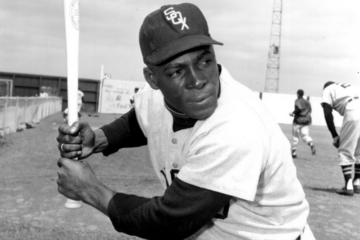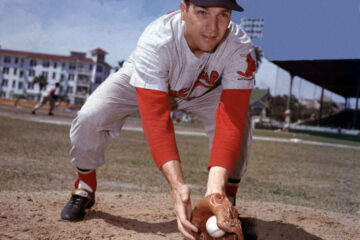The Hall of Fame Index: Carlos Beltran
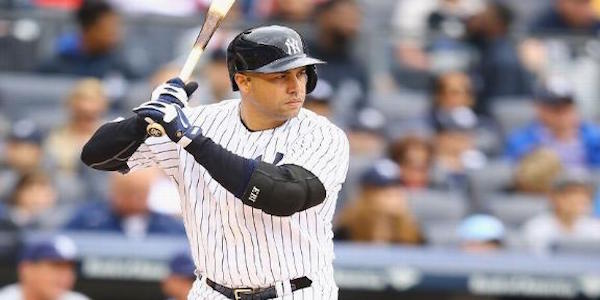
For those few who read my last article on the Hall of Fame Index, I hope you will enjoy this second edition. Sometimes it’s fun to take a break from fantasy sports and simply enjoy players that are essentially living legends. Carlos Beltran registers as a career center fielder even though he has been playing in right field the last several seasons. For many, he has been an oft-injured disappointment, but when we put him up to the test we see some interesting things.
For those of you that missed the piece on Ichiro Suzuki, the Hall of Fame Index is a statistical platform I created by combining other statistical platforms. Specifically, I combine wins above replacement from Baseball Reference, Baseball Prospectus, and Fangraphs to develop one consensus for Hall of Fame fitness. I only look at the players elected by the baseball beatwriters because including the others would confuse the process. The index has a career value component and a peak value component. First, let’s compare Beltran with the eight players selected by the BBWAA.
Career Value
| BR | BP | FG | Total | |
| Willie Mays | 156.2 | 161.9 | 149.9 | 468.0 |
| Ty Cobb | 151.0 | 150.2 | 149.3 | 450.5 |
| Tris Speaker | 133.7 | 132.1 | 130.6 | 396.4 |
| Mickey Mantle | 109.7 | 117.7 | 112.3 | 339.7 |
| Ken Griffey Jr. | 83.6 | 83.2 | 77.7 | 244.5 |
| Joe DiMaggio | 78.0 | 80.5 | 83.1 | 241.6 |
| Duke Snider | 66.5 | 65.3 | 63.5 | 195.3 |
| Kirby Puckett | 50.9 | 55.2 | 44.9 | 151.0 |
| Carlos Beltran | 69.3 | 68.0 | 67.4 | 204.7 |
We must begin any analysis with a disclaimer. The index was never designed to definitively rank players in order. For instance, we have a problem with a lack of data for DiMaggio from Baseball Prospectus at the beginning of his career, so I can’t confidently say Griffey Jr. was better. I could certainly argue it, but I wouldn’t use the index to do that. The index was designed to measure the fitness of every player for the Hall of Fame. This is often where we run into issues and areas of debate.
Generally speaking, debate is good. It keeps people engaged and I would rather encourage debate than discourage debate. That being said, the index does reveal an issue we see from time to time in the face of Kirby Puckett. To put it simply and bluntly, he doesn’t belong in the Hall of Fame. His presence creates an issue because the voters wanted to make an exception based on his sudden exit from the game. Where does that logically stop? Should we elect Thurman Munson or even Don Mattingly? They might have gotten in without injuries or sudden death. Maybe we should elect Tony Oliva too. Attendance is always part of the grade on greatness and that brings us to Carlos Beltran.
Despite his injury difficulties, he comfortably fits on the career value scale between Duke Snider and DiMaggio. Naturally, he hasn’t officially announced his retirement, but we can’t expect him to play much beyond this season, so he likely will not catch DiMaggio. Still, in terms of career value, he has earned his spot regardless.
Peak Value
| BR10 | BP10 | FG10 | Total | |
| Willie Mays | 95.4 | 98.6 | 90.5 | 284.5 |
| Ty Cobb | 88.6 | 88.5 | 88.3 | 265.4 |
| Mickey Mantle | 82.8 | 87.1 | 83.5 | 253.4 |
| Tris Speaker | 77.3 | 76.9 | 76.4 | 230.6 |
| Joe DiMaggio | 65.3 | 67.3 | 69.4 | 202.0 |
| Ken Griffey Jr | 67.6 | 65.7 | 66.3 | 199.6 |
| Duke Snider | 58.7 | 60.2 | 56.6 | 175.5 |
| Kirby Puckett | 44.2 | 49.3 | 39.7 | 133.2 |
| Carlos Beltran | 51.0 | 54.1 | 50.2 | 155.3 |
I didn’t go much into depth the last time, but the design for peak value is likely the biggest difference between my comrades and myself. The JAWS system on Baseball Reference uses a seven-year model. Others use a five-year model and there are other variations all over the internet. I chose ten seasons because the Hall of Fame requires ten seasons to be eligible for enshrinement. It gives me a good breakdown for which modern players to include. If you haven’t played ten seasons then you can’t be included. That being said, there is nothing inherently wrong with the choices of my comrades. At the end of the day, it always comes down to a judgment call.
The peak value portion obviously brings out some stark differences in rankings. Mickey Mantle comes off much better and Joe DiMaggio also looks better. Combining the two gives us the truest estimate of a player’s overall value. Again, I will not definitively say Willie Mays was the greatest center fielder of all-time. I have friends on both side of the issue that will swear up and down that their guy is the best. They make compelling arguments that are enjoyable to hear over a beer. If anyone wants to use the index to bolster their argument they can feel free, but I won’t necessarily endorse that.
Carlos Beltran has issues when it comes to peak value because he struggled to remain healthy consistently throughout his prime. That is the one reason why some people pooh pooh him as a Hall of Fame candidate. Of course, Puckett’s presence in the Hall of Fame presents as an issue. Some people succumb to what I like to call the “if…then” bias. In other words, if Kirby Puckett is in the Hall of Fame then Beltran should. The trouble is that Puckett really shouldn’t be in the Hall of Fame or at least should be a known outlier, so that argument holds little weight.
The Hall of Fame Index
| Career | Peak | Total | |
| Willie Mays | 468.0 | 284.5 | 752.5 |
| Ty Cobb | 450.5 | 265.4 | 715.9 |
| Tris Speaker | 396.4 | 230.6 | 627.0 |
| Mickey Mantle | 339.7 | 253.4 | 593.1 |
| Ken Griffey Jr | 244.5 | 199.6 | 444.1 |
| Joe DiMaggio | 241.6 | 202.0 | 443.6 |
| Duke Snider | 195.3 | 175.5 | 370.8 |
| Kirby Puckett | 151.0 | 133.2 | 284.2 |
| Carlos Beltran | 204.7 | 155.3 | 360.0 |
If we believe the index then Beltran is currently a borderline candidate, but the book on him isn’t finished yet. He could make another all-star team this season and could finish with another season of 30+ home runs and 100+ RBI. While that may not move the needle much in index scores, it will move the needle in the minds of the BBWAA. However, for me it is the rest of the list that is fascinating.
It isn’t so much important where you fall on the debate between Ken Griffey Jr. and Joe DiMaggio. DiMaggio lost several seasons serving his country in World War II. Ken Griffey Jr. lost several seasons because he wasn’t healthy. DiMaggio played in a monochrome era for most of his career where Griffey played in the modern era with players from around the world. The point is that greatness transcends eras and when we use a metric like WAR we wind up seeing stark similarities between great players. Therefore, we can measure current players and players on the outside looking in to those players and get an idea of whether they should be in the Hall of Fame.


